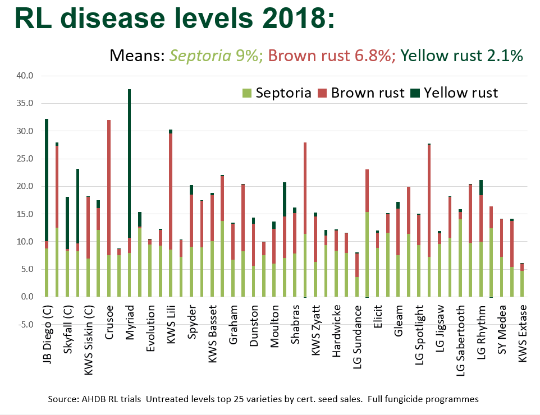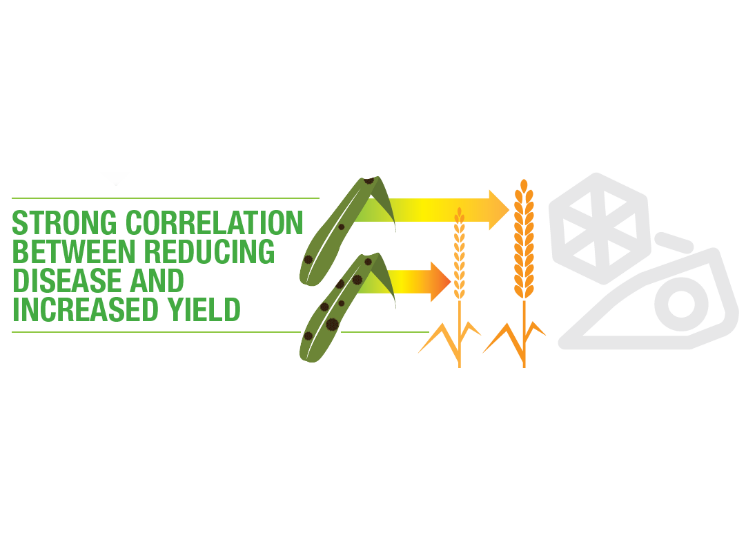
Lower risk varieties
Newer winter wheat varieties, such as Graham, offering improved resistance to Septoria tritici, can be an effective risk management tool.
By choosing one of these varieties you can benefit from flexibility in fungicide timings and potentially product choice and rates, dependent on other risk factors.

Susceptibility of the variety planted is a major factor influencing disease risk
There are now big differences between varieties in their resistance ratings to Septoria tritici, Yellow rust and Brown rust on the AHDB Recommended List, and results from extensive trials at our Innovation Centres across the UK confirm a strong correlation between untreated disease levels and the yield response from fungicide treatment.
Accordingly, Adaptive Disease Management divides varieties into groups and directs greatest fungicide use to those where disease risks are greater and fungicide yield responses are higher.
